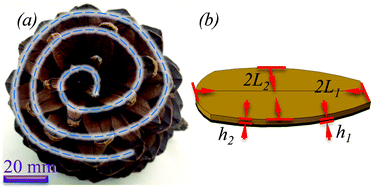On the shape transformation of cone scales†
Abstract
The shape-morphing behaviours of some biological systems have drawn considerable interest over many years. This paper divulges that the opening and closing mechanism of pine cones is attributed to the self-bending of their scales, which undergo three states of humidity-driven deformation in terms of Föppl–von Kármán plate theory. Both numerical simulation and experimental measurement support the theoretical analysis, showing that the longitudinal principal curvature and the transverse principal curvature bifurcate at a critical humidity level according to the thickness and shape of scales. These findings help us understand the shape transformation of bilayer or multi-layer natural structures and gain insights into the design of transformable devices/materials with great potential in numerous applications.



 Please wait while we load your content...
Please wait while we load your content...